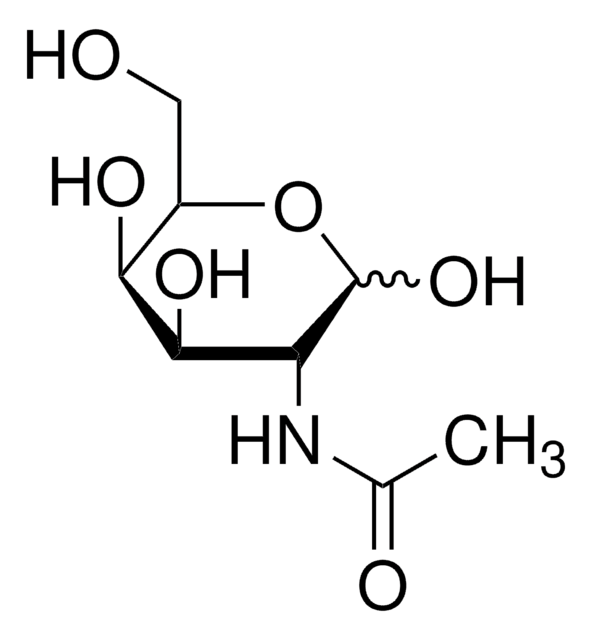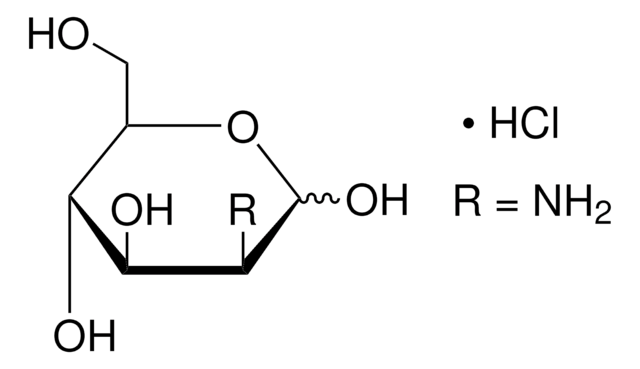Wichtige Dokumente
G1639
D-(+)-Galactosamin -hydrochlorid
BioReagent, suitable for cell culture
Synonym(e):
2-Amino-2-deoxy-D-galactopyranose -hydrochlorid, D-Chondrosamin -hydrochlorid
About This Item
Empfohlene Produkte
Biologische Quelle
fish cartilage (shark)
Qualitätsniveau
Produktlinie
BioReagent
Assay
≥99%
Methode(n)
cell culture | mammalian: suitable
Verunreinigungen
Glucosamine, essentially free
Löslichkeit
water: 50 mg/mL, clear to very slightly hazy, colorless to very faintly yellow
Versandbedingung
ambient
Lagertemp.
room temp
SMILES String
Cl.N[C@@H](C=O)[C@@H](O)[C@@H](O)[C@H](O)CO
InChI
1S/C6H13NO5.ClH/c7-3(1-8)5(11)6(12)4(10)2-9;/h1,3-6,9-12H,2,7H2;1H/t3-,4+,5+,6-;/m0./s1
InChIKey
CBOJBBMQJBVCMW-NQZVPSPJSA-N
Suchen Sie nach ähnlichen Produkten? Aufrufen Leitfaden zum Produktvergleich
Anwendung
- induce livery injury
- inflammatory liver injury
- acute liver failure (ALF) in mice
Biochem./physiol. Wirkung
Lagerklassenschlüssel
11 - Combustible Solids
WGK
WGK 3
Flammpunkt (°F)
Not applicable
Flammpunkt (°C)
Not applicable
Persönliche Schutzausrüstung
Eyeshields, Gloves, type N95 (US)
Hier finden Sie alle aktuellen Versionen:
Besitzen Sie dieses Produkt bereits?
In der Dokumentenbibliothek finden Sie die Dokumentation zu den Produkten, die Sie kürzlich erworben haben.
Kunden haben sich ebenfalls angesehen
Unser Team von Wissenschaftlern verfügt über Erfahrung in allen Forschungsbereichen einschließlich Life Science, Materialwissenschaften, chemischer Synthese, Chromatographie, Analytik und vielen mehr..
Setzen Sie sich mit dem technischen Dienst in Verbindung.


